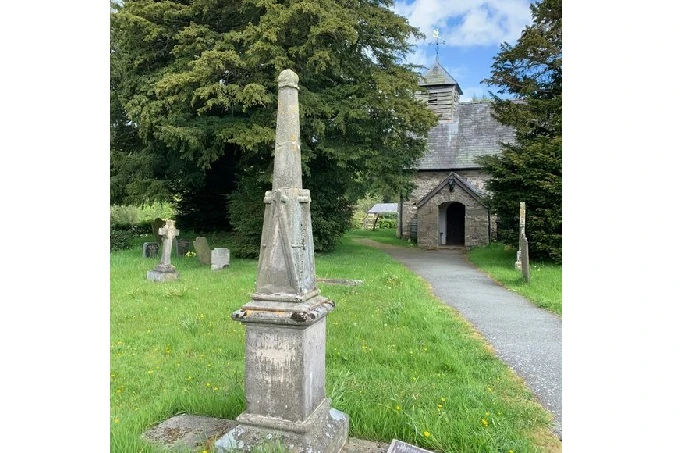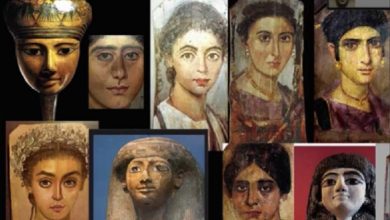Who are the Sin-Eaters, and how did eating at funerals become a tradition?

During the 18th and 19th centuries in England and Scotland, a very peculiar occupation emerged, which came to be known as the sin-eater because of its alleged ability to cleanse the body of sin. This “work” was especially well-liked by those who were less fortunate and economically disadvantaged, which is not surprising at all. Everyone who needed a piece of bread went straight into a career of releasing the souls of the dead. Who first had the concept of “eating” sins, how it helped the dead, and how it still happens today will be discussed later in the article.
Interesting profession
When a family member or friend was in their final moments of life, they requested the presence of a holy person known as a sin-eater. A piece of bread, a few other pastries, and a glass of wine or ale were placed on the chest of the person who was either passing away or had already passed away. The one who took on the role of the sin eater was tasked with consuming everything, down to the very last crumb and drop. People had the misconception that their relatives’ sins would be absorbed into their food and drink. As a result, the devourer took all of the deceased person’s sins upon himself, paving the way for the dead person’s entry into heaven.
Obviously, at this point, the sin-soul eater was responsible for bearing the weight of all the wrongdoings committed by the dead. In addition to receiving food for his labour, he was compensated for his efforts with a handful of small coins, which are equivalent to some dollars in today’s currency—a relatively insignificant payment for the burden of evil deeds committed by untold numbers of men and women. As a result, only the representatives of the population at the lowest economic tier had the courage to gamble with the possibility of an afterlife. Only those people who desired tasty food were more important than anything else.
In some texts from the 17th century, bizarre feasts like these were described as an “ancient custom” that was observed at funerals. This custom dwelled on in some parts of the world well into the early 20th century. Everyone who lives in the vast lands once part of the CIS is familiar with this practice today. For a very long time, a commemoration consisting of a mandatory collection of traditional dishes and an abundance of libations has been an essential component of an entire layer of Orthodox culture. In addition to this, you must consume everything to the very last crumb and sip your drink to the last drop; otherwise… That is very interesting; if not, then what?
In his book titled “Popular Antiquities of Great Britain,” Brand discussed the practice in detail in writing. The book was initially published for the first time in 1813. The following is a quote from the author found in that section: “The sin-eater sat facing the door, then they gave him a change, which he put in his pocket.” After that, he went on to eat some bread and finish off a mug of ale. After completing all of these steps while standing, the eater then said, “Go to eternity calmly and easily.” Therefore, he was responsible for all of the sins committed by the person who passed away.
Various parts of Great Britain followed such practices as a matter of course. For instance, a professional sin-eater would show up at a number of funerals in the county of Monmouthshire, which is located in Wales. In her travelogue titled Hill and Valley, which was published in 1838, author Catherine Sinclair discusses this topic. Her analysis of such an unconventional piece of work is quite critical. According to her, it should come as no surprise that the individuals in question are simply unfaithful. They engage in a very daring form of deception. The sin-eaters are prepared to sell their birthright for a bowl of lentil stew, just like Esau did. The sin-eaters carried out a necessary but unpleasant duty for those participants in the ritual who believed in the efficacy of the ceremony. It was also the impulse for Megan Campisi’s first novel, titled The Sin Eater, in which the author goes deep into the topic at length.
Those who have been cast out of society and are the final consumers of sins
During the height of the sin-eating business, “God-fearing” villagers were more than willing to employ people who claimed to engage in the practice. They had a strong desire to absolve themselves (and those they cared about) of the consequences of their sins (and the sins of those they cared about) by passing them on to another person. People were able to very rapidly and effortlessly modify their morality to accommodate this practice. It’s possible that ignorance was to blame for this. People who were only religious out of habit and were not in any sense genuine Christians naively believed that sin could be transferred from one person to another. Not to mention the fact that it can actually be consumed. It would appear that the genuine Gospel and the atonement that Christ offered remained “behind the scenes” for them throughout their existence. As a result, they pursued this path in the hope of “reaching” the heaven that had been promised.
At the same time, this peculiar ritual imposed not only peculiar duties on a professional performer. In the majority of instances, exclusion from society was a just punishment. The sin eaters were cast out into the world. They did not have a house of their own, but everyone who had a seriously ill or dying family member or friend eagerly sought them out to invite them to their home. These people were common sights at every funeral they attended.

Sin eating became a less common practice by the middle of the 19th century, which contributed to its eventual decline. Richard Munslow, known as the “last recorded sin-eater,” is credited with briefly reviving the practice in the late 19th century. He did this not to secure food for himself but rather out of desperation and an overwhelming sense of loss for his departed loved ones. Munslow was a successful farmer who was devoid of his children almost simultaneously and in almost identical circumstances. Because his grief was so difficult to bear, he started engaging in sinful behaviours as a way to honour those who had passed away. Therefore, he reasoned that he should assist his children in the next life. The final sin eater passed away in the year 1906. He ended up being the only member of his profession ever to receive recognition for their efforts.
Where did those people who eat sin come from?
It is not entirely clear where the age-old custom of eating one’s sins came from in the past. Historiographers believe that the ritual can be traced back to paganism. In the beginning, in honour of the one who had passed away, relatives gave out some snacks and small amounts of money in exchange for prayers for the dead person. This practice eventually developed into the tradition of eating the sins of the dead over time. The consumption of bread came to represent a soul corrupted by sin, and whoever did so took full responsibility for the world’s sins. In recognition of this long-standing custom, a one-of-a-kind holiday was established. Both Catholicism and Orthodoxy observe All Souls’ Day on November 2; the other celebrates it on the day that is one week after Easter.
This practice has taken on all the hallmarks of evangelization within Protestantism and is perhaps a fascinating aspect of the situation. The sin-eater was given permission to carry out his duties. During this time, grieving family members shared their testimonies about Christ with him and read him sermons. Because Christians believed that man does not have the ability to control what happens in the spiritual world, they did not condone the practice of eating sins. This viewpoint is heretical.
The priests could not accept that they were no longer in charge
During the height of their power, sin eaters took the place of priests. Every community had its own “sin eater,” who was dispatched to care for those who were ill or had passed away. Indeed, they were social outcasts who were rejected by all of the communities they tried to join. They were able to get by on the meagre income that the job they did bring in because it was done so well. In exchange, they were given an eternal state of unrest; it was a sort of deal with the devil in which they gave up a morsel of bread in the here and now in exchange for an eternal soul. There was nothing for the priests to do. Up until that point, their responsibility had been to carry out the rituals associated with the funeral and to forgive the deceased’s sins. Official clergy could not be expected to tolerate such a level of ignorance, of course.
People have always been under the impression that the sin-eater practice does not produce desired results. People were adamant about inviting them. The problem was solved thanks to the omnipotent hand of time. By the turn of the 20th century, the profession had already begun its slow but steady decline. It’s trendy to dress like a priest these days. Of course, this does not imply that sin-eaters or those interested in utilizing their services have totally disappeared from the world. Belief in any and all prejudices, no matter how extreme, is a defining feature of humanity. After all, the primary mission of the devil has always been to divert people’s attention away from the genuine religion by presenting a poor imitation of it.
Despite millions of people being dead, he reassuringly tells everyone that “it’s not scary. Do what you want, live how you like, do not think about Christ; the priest will come, and he will pray, and he will sing; the soul eater of sins will come, and he will eat everything; relatives will put candles, and they will order a prayer service, and everything will be fine!”




